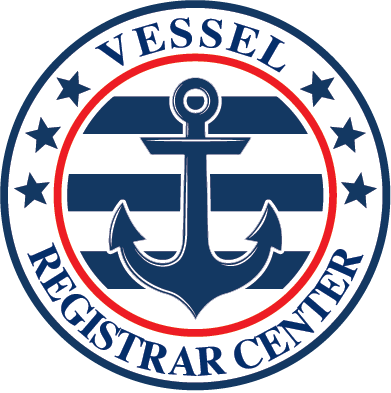To Find the Owner of a Yacht, Use the Abstract of Title
Interested parties can find vessel ownership information by applying for an Abstract of Title.
An Abstract of Title will include the managing owner of a documented vessel as well as the ownership history of a vessel and the status of any encumbrances/liens on the vessel.
Use this form to apply for an
Abstract of Title.
It is no longer possible to search online for documented vessel ownership information. That was removed from online access in 2018.
To Find the Owner of a Yacht, Obtain a Certified Copy of a Certificate of Documentation
Another way to find the managing owner’s name and address is through a Certified Copy of a Certificate of Documentation.
Those interested can use this link to obtain a
Certified Copy of vessel documentation.
Even though the search will not reveal ownership information, anyone can conduct a search at our site.
Entering a vessel’s Official Number or Hull Identification Number (HIN) will reveal the vessel’s name/number/HIN/flag, as well as its tonnage information, service information, particulars/dimensions, and more (such as the status of its current Certificate of Documentation). That includes when the COD was issued and when it will expire.
Use this link to search the
Coast Guard database of documented vessels.
For More Questions About the Documented Vessel Owners
If you have further questions about finding vessel owners, contact the Vessel Registrar Center at info@usvesselregistrar.us or (800) 535-8570 Monday-Friday, 8 AM to 4:30 PM.
Documented Vessel Eligibility
In short, vessels that appear in that search must measure at least five net tons and be wholly owned by a citizen of the United States.
Below are the specific laws regarding which vessels can appear on the registry.
67.5 Vessels eligible for documentation.Any vessel of at least five net tons wholly owned by a citizen or citizens of the United States is eligible for documentation under this part. This includes, but is not limited to, vessels used exclusively for recreational purposes and vessels used in foreign trade.
67.7 Vessels requiring documentation.Any vessel of at least five net tons which engages in the fisheries on the navigable waters of the United States or in the Exclusive Economic Zone, or coastwise trade, unless exempt under § 67.9(c), must have a Certificate of Documentation bearing a valid endorsement appropriate for the activity in which engaged.
Subpart C—Citizenship Requirements for Vessel Documentation 67.30 Requirement for citizen owner.Certificates of Documentation may be issued under this part only to vessels which are wholly owned by United States citizens. Pursuant to extraordinary legislation at 46 U.S.C. 12118 (Bowater Amendment) and 46 U.S.C. 12117 (Oil Pollution Act of 1990), Certificates of Documentation with limited endorsements may be issued in accordance with part 68 of this chapter to vessels owned by certain persons who are not citizens as defined in this part.
67.31 Stock or equity interest requirements.(a) The stock or equity interest requirements for citizenship under this subpart encompass: title to all classes of stock; title to voting stock; and ownership of equity. An otherwise qualifying corporation or partnership may fail to meet stock or equity interest requirements because: Stock is subject to trust or fiduciary obligations in favor of non-citizens; non-citizens exercise, directly or indirectly, voting power; or non-citizens, by any means, exercise control over the entity. The applicable stock or equity interest requirement is not met if the amount of stock subject to obligations in favor of non-citizens, non-citizen voting power, or non-citizen control exceeds the percentage of the non-citizen interest permitted.
(b) For the purpose of stock or equity interest requirements for citizenship under this subpart, control of non-fishing industry vessels includes an absolute right to: Direct corporate or partnership business; limit the actions of or replace the chief executive officer, a majority of the board of directors, or any general partner; direct the transfer or operations of any vessel owned by the corporation or partnership; or otherwise exercise authority over the business of the corporation or partnership. Control does not include the right to simply participate in these activities or the right to receive a financial return, e.g., interest or the equivalent of interest on a loan or other financing obligations.
(c) For the purpose of this section, control of a fishing industry vessel means having:
(1) The right to direct the business of the entity that owns the vessel;
(2) The right to limit the actions of or to replace the chief executive officer, the majority of the board of directors, any general partner, or any person serving in a management capacity of the entity that owns the vessel;
(3) The right to direct the transfer, the operation, or the manning of a vessel with a fishery endorsement.
(d) For purposes of meeting the stock or equity interest requirements for citizenship under this subpart where title to a vessel is held by an entity comprised, in whole or in part, of other entities which are not individuals, each entity contributing to the stock or equity interest qualifications of the entity holding title must be a citizen eligible to document vessels in its own right with the trade endorsement sought.
67.33 Individual.An individual is a citizen if native-born, naturalized, or a derivative citizen of the United States, or otherwise qualifies as a United States citizen.
67.35 Partnership.A partnership meets citizenship requirements if all its general partners are citizens, and:
(a) For the purpose of obtaining a registry or recreational endorsement, at least 50 percent of the equity interest in the partnership is owned by citizens.
(b) For the purpose of obtaining a fishery endorsement, at least 75 percent of the equity interest in the partnership, at each tier of the partnership and in the aggregate, is owned by citizens.
(c) For the purpose of obtaining a coastwise endorsement at least 75 percent of the equity interest in the partnership is owned by citizens or the vessel qualifies under § 68.60 or § 68.105 of this chapter.
67.36 Trust.(a) For the purpose of obtaining a registry or recreational endorsement, a trust arrangement meets citizenship requirements if:
(1) Each of its trustees is a citizen; and
(2) Each beneficiary with an enforceable interest in the trust is a citizen.
(b) For the purpose of obtaining a fishery endorsement, a trust arrangement meets citizenship requirements if:
(1) It meets all the requirements of paragraph (a) of this section; and
(2) At least 75 percent of the equity interest in the trust, at each tier of the trust and in the aggregate, is owned by citizens.
(c) For the purpose of obtaining a coastwise endorsement a trust arrangement meets citizenship requirements if:
(1) It meets the requirements of paragraph (a) of this section and at least 75 percent of the equity interest in the trust is owned by citizens; or
(2) It meets the requirements of § 68.60 or § 68.105 of this chapter.
67.37 Association or joint venture.(a) An association meets citizenship requirements if each of its members is a citizen.
(b) A joint venture meets citizenship requirements if each of its members is a citizen.
67.39 Corporation.(a) For the purpose of obtaining a registry or a recreational endorsement, a corporation meets citizenship requirements if:
(1) It is incorporated under the laws of the United States or of a State;
(2) Its chief executive officer, by whatever title, is a citizen;
(3) Its chairman of the board of directors is a citizen; and
(4) No more of its directors are non-citizens than a minority of the number necessary to constitute a quorum.
(b) For the purpose of obtaining a fishery endorsement, a corporation meets citizenship requirements if:
(1) It meets all the requirements of paragraph (a) of this section; and
(2) At least 75 percent of the stock interest in the corporation, at each tier of the corporation and in the aggregate, is owned by citizens.
(c) For the purpose of obtaining a coastwise endorsement a corporation meets citizenship requirements if:
(1) It meets the requirements of paragraph (a) of this section and at least 75 percent of the stock interest in the corporation is owned by citizens; or
(2) It meets the requirements of § 68.60 or § 68.105 of this chapter.
(d) A corporation which does not meet the stock interest requirement of paragraph (c) of this section may qualify for limited coastwise trading privileges by meeting the requirements of part 68 of this chapter.
67.41 Governmental entity.A governmental entity is a citizen for the purpose of obtaining a vessel document if it is an entity of the Federal Government of the United States or of the government of a State as defined in § 67.3.
67.43 Evidence of citizenship.When received by the Coast Guard, a properly completed original Application for Initial Issue, Exchange, or Replacement of Certificate of Documentation; or Redocumentation (form CG–1258) establishes a rebuttable presumption that the applicant is a United States citizen.
67.47 Requirement for Maritime Administration approval.(a) The following transactions, among others, require approval of the Maritime Administration in accordance with 46 CFR part 221:
(1) Placement of the vessel under foreign registry;
(2) Operation of the vessel under the authority of a foreign country; and
(3) Sale or transfer of an interest in or control of the vessel from a citizen of the United States to a person not a citizen of the United States, as defined in 46 U.S.C. 50501.
(b) A Certificate of Documentation may not be issued for a vessel which subsequent to the last issuance of a Certificate of Documentation has undergone any transaction listed in paragraph (a) of this section, even if the owner meets the citizenship requirements of this subpart, unless evidence is provided that the Maritime Administration approved the transaction.
(c) The restriction imposed by paragraph (b) of this section does not apply to a vessel identified in § 67.11(b).
Subpart D—Title Requirements for Vessel Documentation 67.50 Requirement for title evidence.The owner of a vessel must present title evidence in accordance with one of the methods specified in this subpart:
(a) When application is made for a coastwise endorsement for a vessel which has not previously been qualified for such endorsement;
(b) For initial documentation of a vessel;
(c) When the ownership of a documented vessel changes in whole or in part;
(d) When the general partners of a partnership owning a documented vessel change by addition, deletion, or substitution, without dissolution of the partnership; or
(e) When a vessel which has been deleted from documentation is returned to documentation and there has been an intervening change in ownership.
67.53 Methods of establishing title.Title to a vessel may be established through one of the following methods:
(a) Simplified method without evidence of build. The owner must produce a copy of the last registration of the vessel (State, Federal, or foreign) and evidence which establishes chain of title from that registration to the present owner.
(b) Simplified method with evidence of build. The owner must produce a copy of the last registration of the vessel (State, Federal, or foreign) and evidence which establishes the chain of title from that registration to the present owner along with evidence of the facts of build in accordance with subpart F of this part.
(c) Complete chain of title, without evidence of citizenship for each entity in that chain of title
. The owner must provide evidence which establishes:
(1) The facts of build in accordance with subpart F of this part; and
(2) A complete chain of title for the vessel from the person for whom the vessel was built to the present owner.
(d) Complete chain of title, with evidence of citizenship for each entity in that chain of title. The owner must provide evidence which establishes:
(1) The facts of build in accordance with subpart F of this part; and
(2) A complete chain of title for the vessel from the person for whom the vessel was built to the present owner, accompanied by competent and persuasive evidence establishing the citizenship of each entity in the chain of title.
67.55 Requirement for removal from foreign registry.The owner of a vessel must present evidence of removal of the vessel from foreign registry whenever:
(a) The owner applies for initial documentation of a vessel that has at any time been registered under the laws of a foreign country; or
(b) The owner applies for reentry into documentation of a vessel that had been registered under the laws of a foreign country since it was last documented under the laws of the United States.
67.57 Extent of title evidence required for initial documentation.(a) Vessels never registered under any system:
(1) Where a coastwise endorsement is sought, the only title evidence required for a vessel being documented by the owner for whom it was built is the certification of the builder (form CG–1261) described in § 67.99. Any other applicant must present title evidence in accordance with § 67.53(d).
(2) Where a fishery endorsement is sought, the only title evidence required for a vessel being documented by the owner for whom it was built is the certification of the builder (form CG–1261) described in § 67.99. Any other applicant must present title evidence in accordance with either paragraph (c) or (d) of § 67.53.
(3) Where a registry or recreational endorsement is sought, the only title evidence required for a vessel being documented by the first owner of the vessel is the certification of the builder (form CG–1261) described in § 67.99, or a Manufacturer's Certificate of Origin. Any other applicant must also present title evidence in accordance with either paragraph (c)(2) or (d)(2) of § 67.53.
Note:
Manufacturer's Certificates of Origin are sometimes used as shipping documents for vessels, and may recite as the first owner a person other than the person for which the vessel was built. Therefore, a chain of title which begins with a Certificate of Origin will be deemed incomplete.
(b) Vessels previously registered under the laws of a State or a foreign government:
(1) Where a coastwise endorsement is sought, title evidence must be presented in accordance with § 67.53(d).
(2) Where a fishery endorsement is sought, title evidence must be presented in accordance with paragraph (b), (c), or (d) of § 67.53.
(3) Where a registry or recreational endorsement is sought, title evidence must be presented in accordance with paragraph (a), (b), (c), or (d) of § 67.53.
67.59 Extent of title evidence required for change in ownership of a documented vessel.When the ownership of a documented vessel changes, in whole or in part, the applicant for documentation must present:
(a) Title evidence in accordance with subpart E of this part to reflect all ownership changes subsequent to the last issuance of a Certificate of Documentation; and
(b) Where a registry, fishery, or recreational endorsement is sought, evidence of the citizenship of all owners subsequent to the last owner for whom the vessel was documented except for a vessel:
(1) Identified in § 67.11(b); or
(2) For which the Maritime Administration has granted approval for transfer or sale under 46 CFR part 221.
(c) Where a coastwise endorsement is sought, evidence establishing the citizenship of all owners subsequent to the last owner for whom the vessel was documented with a coastwise endorsement, if such evidence is not already on file with the Coast Guard. If the vessel has never been documented with a coastwise endorsement, evidence must be presented to establish the citizenship of each owner of the vessel for whom such evidence is not already on file with the Coast Guard.
67.61 Extent of title evidence required for vessels returning to documentation.(a) When the owner of a vessel which has been deleted from documentation applies to have the vessel returned to documentation, the owner must, except as provided in paragraphs (b) and (c) of this section, provide evidence establishing the complete chain of title from the last owner under documentation, and citizenship evidence for all owners in that chain of title.
(b) When a vessel is returned to documentation after having been under foreign registry, the owner must provide a copy of the last foreign registry, the evidence of removal from foreign registry required by § 67.55, and evidence establishing the complete chain of title from the last owner under foreign registry. No citizenship evidence need be provided for owners in that chain of title.
(c) The owner of a vessel identified in § 67.11(b) or for which the Maritime Administration has granted approval for transfer or sale, either by written order or by general approval in 46 CFR part 221, and which was under a State or Federal registration or titling system, must provide a copy of the last registration or title, the evidence of removal from foreign registry required by § 67.55, if applicable, and evidence establishing the complete chain of title from the last owner under such registry or title. No citizenship evidence need be provided for owners in that chain of title.
Note:
Although vessels returned to documentation without a complete chain of title are not eligible for a coastwise endorsement, this does not preclude such an endorsement if the chain of title, with citizenship evidence, is completed at a later date.
Subpart E—Acceptable Title Evidence; Waiver 67.70 Original owner.The builder's certification described in § 67.99 serves as evidence of the original owner's title to a vessel.
67.73 Transfers prior to documentation.A transfer of vessel title prior to documentation may be evidenced by:
(a) Completion of the transfer information on the reverse of the builder's certification on form CG–1261;
(b) Completion of the transfer information on the reverse of the Manufacturer's Certificate of Origin; or
(c) A bill of sale which meets the criteria for filing and recording set forth in subpart P of this part.
67.75 Transfers by sale or donation subsequent to documentation.(a) Except as otherwise provided in this subpart, transfers of vessel title must be evidenced by a bill of sale which meets the criteria for filing and recording set forth in subpart P of this part. Except as otherwise provided in subpart O of this part, each bill of sale must be accompanied by a declaration of citizenship from the new owner, executed on the appropriate Maritime Administration form described in § 67.211.
(b) The bill of sale form used may be form CG–1340 or form CG–1356, as appropriate.
(c) An applicant for documentation who cannot produce required title evidence in the form of an instrument eligible for filing and recording in accordance with subpart P of this part may apply for a waiver of that requirement in accordance with the provisions of § 67.89.
67.77 Passage of title by court action.(a) When title to a vessel has passed by court action, that passage must be established by copies of the relevant court order(s) certified by an official of the court.
(b) When authority to transfer a vessel has been conferred by court action, that authority must be established by copies of the relevant court order(s) certified by an official of the court.
67.79 Passage of title without court action following death of owner.(a) When title to a vessel formerly owned in whole or in part by an individual now deceased passes without court action, an applicant for documentation must present:
(1) When title passes to a surviving joint tenant or tenants or to a tenant by the entirety, a copy of the death certificate, certified by an appropriate State official; or
(2) Where the laws of cognizant jurisdiction permit passage of title without court action, evidence of compliance with applicable State law.
(b) Passage of title subsequent to devolutions such as those described in paragraph (a) of this section, must be established in accordance with the remainder of this subpart.
67.81 Passage of title in conjunction with a corporate merger or similar transaction.When the title to a vessel has passed as the result of a corporate merger or similar transaction wherein the assets of one corporation have been transferred to another, the passage of title must be established by:
(a) Materials, such as a resolution of the board of directors or shareholders of the corporation which held title to the vessel before the transaction, which either unequivocally transfers all of the assets of the corporation or which specifically identifies the vessel as being among the assets transferred; and
(b) In jurisdictions where there is an official recognition of corporate mergers and similar transactions, a copy of such official recognition certified by the cognizant official of that jurisdiction.
67.83 Passage of title by extra-judicial repossession and sale.When title to a documented vessel has passed by reason of an extra-judicial repossession and sale, such passage must be established by:
(a) A copy of the instrument under which foreclosure was made;
(b) An affidavit from the foreclosing party setting forth the reasons for foreclosure, the chronology of foreclosure, the statute(s) under which foreclosure was made, and the steps taken to comply with the relevant instrument and statute(s);
(c) Evidence of substantial compliance with the relevant instrument and statute(s); and
(d) A bill of sale which meets the criteria for filing and recording set forth in subpart P of this part from the foreclosing party as agent for the defaulting owner(s).
67.85 Change in general partners of partnership.When the general partners of a partnership owning a documented vessel change by addition, deletion, or substitution without dissolution of the partnership, the change must be established by a written statement from a surviving general partner detailing the nature of the change.
67.87 Change of legal name of owner.(a) When the name of a corporation which owns a documented vessel changes, the corporation must present certification from the appropriate governmental agency evidencing registration of the name change.
(b) When the name of an individual who owns a documented vessel changes for any reason, competent and persuasive evidence establishing the change must be provided.
67.89 Waiver of production of a bill of sale eligible for filing and recording.(a) When the evidence of title passage required by this subpart is a bill of sale which meets the criteria for filing and recording set forth in subpart P of this part, and the applicant is unable to produce a bill of sale meeting those criteria, the applicant may request that the Director, National Vessel Documentation Center waive that requirement.
(b) No waiver of the requirement to produce a bill of sale eligible for filing and recording may be granted unless the applicant provides:
(1) A written statement detailing the reasons why an instrument meeting the filing and recording criteria of this part cannot be obtained; and
(2) Competent and persuasive evidence of the passage of title.
67.91 Passage of title pursuant to operation of State law.When title to a documented vessel has passed by operation of State law for reasons other than those specified in this subpart, such passage must be established by:
(a) A copy of the statute permitting transfer of title to the vessel and setting forth procedures to be followed in disposing of the vessel;
(b) An affidavit from the party acting against the vessel, setting forth the basis for selling the vessel, and the steps taken to comply with the requirements of the statute under which title passes;
(c) Evidence of substantial compliance with the relevant statute(s); and
(d) A bill of sale which meets the criteria for filing and recording from the acting party as agent for the owner(s) of record.
Note:
State law authorizing a marina to dispose of abandoned vessels is an example of passage of title by operation of law contemplated by § 67.91.
Subpart F—Build Requirements for Vessel Documentation 67.95 Requirement for determination.Evidence that a vessel was built in the United States must be on file for any vessel for which a coastwise or fishery endorsement is sought, unless the vessel is otherwise qualified for those endorsements/
67.97 United States built.To be considered built in the United States a vessel must meet both of the following criteria:
(a) All major components of its hull and superstructure are fabricated in the United States; and
(b) The vessel is assembled entirely in the United States.
67.99 Evidence of build.(a) Evidence of the facts of build may be either a completed original form CG–1261, or other original document containing the same information, executed by a person having personal knowledge of the facts of build because that person:
(1) Constructed the vessel;
(2) Supervised the actual construction of the vessel; or
(3) Is an officer or employee of the company which built the vessel and has examined the records of the company concerning the facts of build of the vessel.
(b) A vessel owner applying for documentation must file a separate certificate from each builder involved in the construction of the vessel.
(c) A Manufacturer's Certificate of Origin is not evidence of the facts of build.
67.101 Waiver of evidence of build.(a) A vessel owner applying for documentation unable to obtain the evidence of build required by § 67.99 may apply for a waiver of that requirement to the Director, National Vessel Documentation Center.
(b) No waiver of the requirement in § 67.99 to produce evidence of build may be granted unless the applicant provides:
(1) A written request for the waiver, explaining why the evidence required by § 67.99 cannot be furnished; and
(2) Competent and persuasive evidence of the facts of build.
Subpart G—Tonnage and Dimension Requirements for Vessel Documentation 67.105 Requirement for determination.The gross and net tonnage and dimensions of a vessel must be determined:
(a) For initial documentation;
(b) Whenever there is a change in the gross or net tonnage or dimensions of a documented vessel; or
(c) When the gross or net tonnage of a vessel returning to documentation has changed since the vessel was last documented.
67.107 System of measurement; evidence.(a) The gross and net tonnage and dimensions of a vessel for purposes of this part are determined in accordance with 46 CFR part 69.
(b) A certificate of measurement issued by an authorized official is the only acceptable evidence of the gross and net tonnage of a vessel measured in accordance with subpart B, C, or D of 46 CFR part 69. A certificate of measurement is not issued for vessels measured under subpart E of 46 CFR part 69 since the gross and net tonnage are determined as part of the documentation process.




